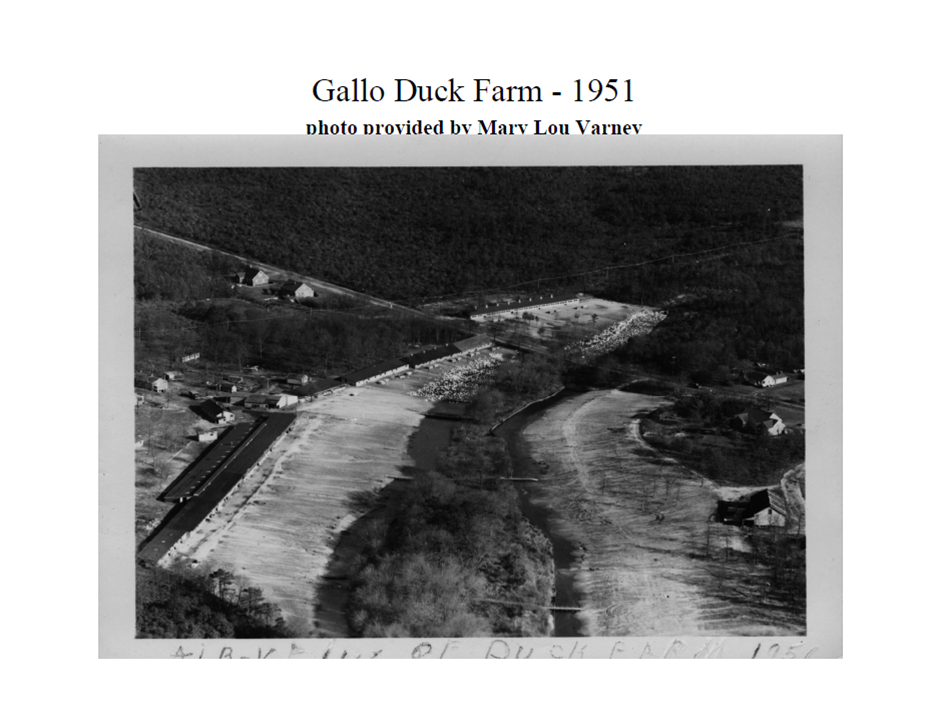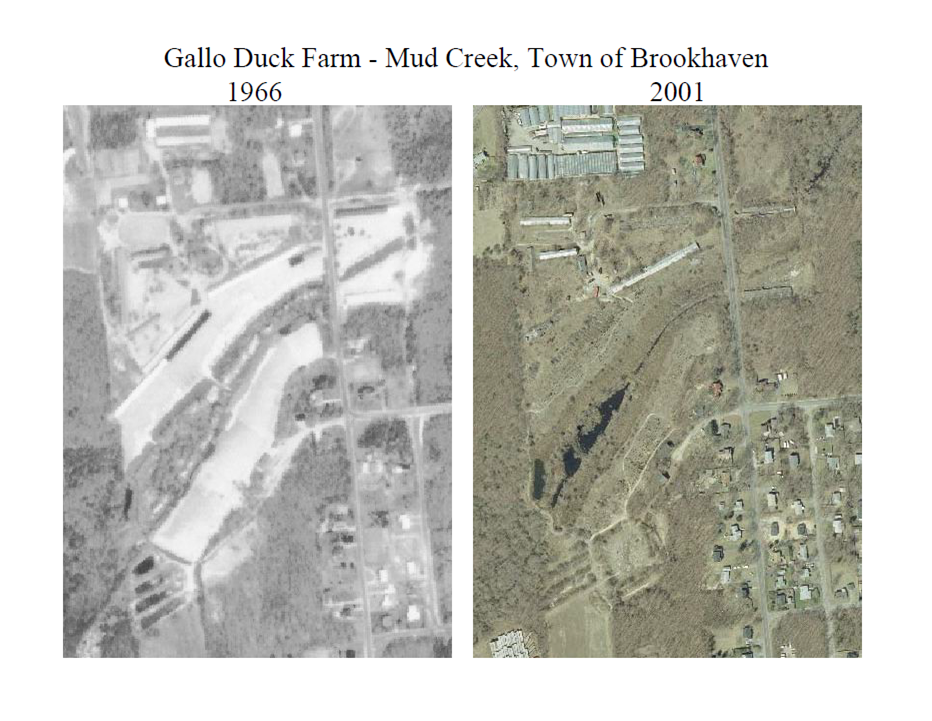The Gallo Duck Farm started in 1922, and continued as a family-run business until 1987, when duck production on the farm ceased. A 1966 aerial photo (see below) shows the configuration of farm facilities (feedlots, ponds, waste disposal lagoons, structures) at the time of probable maximum level of operation and extent. The area in active use had been expanded over the years to include the areas north and south of the East Branch stream, both to the west and east of Gazzola Drive (a portion of which was used for turkey production). The duck farm was in operation for about 65 years.
The average number of ducks present on the farm at one time was estimated at 70,000 ducks on 11.9 acres of pens in the early 1970s. Up to five crops of ducks were grown per year. At maximum production, 350,000 ducks were grown on the farm each year. Over decades, the many millions of ducks grown on the farm generated an extremely high waste load. (In comparison, the daily generation of N-nitrogen in manure from 70,000 ducks is equivalent to that produced by 25,000 people!) Duck wastes were discharged directly into the East Branch of Mud Creek with no or minimal treatment that reflected the regulatory climate in existence during the period of operation.
The environmental impacts of duck farm operation at the site were extensive (woodland converted into pens and open feedlots; streambed altered to create pond areas for duck use; surface water quality degradation; waste disposal lagoons; offensive odors). From the western boundary of the site, the East Branch stream flows to the southwest through woodland along the north side of Montauk Highway, and then joins the West Branch, another tributary to Mud Creek, before entering a culvert under the highway and flowing into Robinson Pond to the south.

Adverse offsite impacts were also very significant due to the high organic waste load discharged to the stream, which was malodorous and very turbid because of the large amount of suspended waste particles. During the period of duck farm operation, large volumes of duck sludge were deposited along the streambed and into Robinson Pond, and water quality degradation (nutrients and coliform contamination) was evident in the tidal portion of Mud Creek and Great South Bay.
The site as it exists today: dilapidated and burned out buildings and sheds; piles of debris/waste; old equipment and machinery; duck pen fencing; pump houses and piping; waste disposal lagoons; Phragmites dominated steam bed; stagnant water with low flow; stagnant ponds; earthen berms/dams; old field type vegetation. However, the odors are gone, and the visual appearance of the stream as it leaves the perimeter of the farm is vastly improved; it is now clear of the high turbidity due to cessation of duck farm operation and the passage of time (24 years).
An opportunity to restore the environmental attributes of this abandoned and despoiled site now presents itself. After an appropriate inventory and evaluation of site conditions, the following activities may, among others, be appropriate for restoration and rehabilitation: a. removal of structures having no historical significance, old equipment, fencing, pipes and debris; b. grading to fill old waste disposal lagoons and to re-establish the stream bed so as to eliminate stagnant ponding and create wildlife/waterfowl habitat; c. control the invasion of Phragmites that has occurred in and along the altered stream corridor; d. planting of native wetland and upland vegetation; e. control of runoff from Gazzola Drive; and f. provision of access facilities for the public in accord with a park restoration and management plan.
